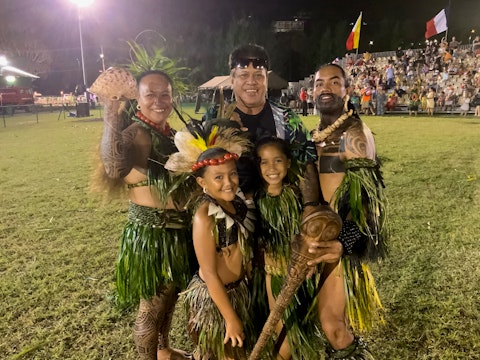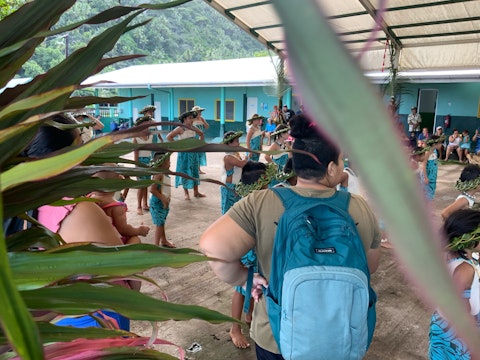The Unbroken Link
Matatiki is Marquesan iconographic art
Matatiki is Marquesan iconographic art
‘Mata-tiki’ expresses by mata the meaning of the gaze or the face of the primordial ancestor Tiki, and by filiation the idea of image or representation.
Tiki is the force of the world, the force that springs from the earth and takes shape all around us. All symbols represent Tiki. According to one of the legends, Tiki had two faces, one luminous and the other dark. When humans discovered Tiki's dark side, they dismembered him. In each piece of his dismembered body, we find his image, his soul. Tiki was resurrected. Since then, mankind has never stopped marking Tiki. This veneration of Tiki has given rise to the Marquesan graphic arts found on wood, stone and skin. Every object is imbued with Mana, divine power and vital energy. All aspects of Marquesan life were geared towards preserving mana.
In 1898, the French colonial authorities issued a decree banning tattooing (Patutiki: hammering, writing Tiki) throughout the te Henua Enana/ te Fenua Enata archipelago. Following this, Marquesans deliberately placed the symbols of their tattoos on other supports, on the objects they created so as not to forget.
The tapa previously used in Te Fenua Enata was plain. It was used in particular as clothing. The entire population was tattooed, and the tapa, which had no design, made it easier to read the tattoos.
Sarah Tahiafitiani Vaki, Tapa ambassador and academician, tells us that in 1952, the teacher Tihoti Tianini, from the Omoa valley in Fatu Iva, decided to add the drawing of tattoo motifs to the school programme. The course was taught by Léon Haiheana Teiituetani, a sculptor from the same valley. He was the first artist to transcribe the famous motifs onto tapa. His wife Tahia Kai was in charge of preparing the tapa (threshing and drying flat), Hai composed the designs, and his son painted the motifs in vegetable ink made from the leaves of papaniaohe (Mucuna sloanei), a liana in the Fabaceae family. This is how the decorated tapa came into being.
Emmanuelle Tauapahatua Gilmore was one of the young people who had taken Hai's classes and had carefully preserved his notebook of patterns. Influenced by his master's work, he began to imitate his teacher. Then his whole family got involved in this new activity. He remembers that his mother was the generation that saw the transition from the time when tapa was used for everyday life to the time when it became an object of commerce.
Tapa in the form of vegetable fabric is still used to make costumes for celebrations. Heretu Tetahiotupa, who presided over the COMOTHE (Comité Organisateur du Matavaà o te Henua Ènana) at the last Matavaà (major festival of arts and culture in the Marquesas Islands), proposed the theme Auìi Tupuna ‘ancestral energy’, inviting all the delegations to make a point of using traditional techniques when making the costumes for the event. The other islands placed orders with the Fatu Iva mothers and some women started to learn the technique so that they could make Tapa for their families. The tapping of the tapa could be heard for several weeks on all the islands.
Over the years and with the arrival of new materials on the island of Fatu Iva, the locals have perfected the final technique to make the tapa as flat as a sheet of paper (soak the tapa in a mixture of starch powder and water and dry it on a plywood or Plexiglas board in the shade). The small brush is always a tool made by hand on the spot from a piece of the family child's hair. But vegetable ink has been replaced by imported black ink in pots to gain time. It's a delicate and meticulous process.
Today, tapa is an essential source of income for the inhabitants of Fatu Iva's two valleys: Omoa and Hanavave.
Not everyone is aware of the symbolism of the patterns they use. Several studies have been carried out, notably by Teiki Huukena, based on the writings of explorers, but also by elders who knew the last tattooed people before the ban. A part of the mystery remains, and certain symbols have been deduced from the information gathered. The new generation has taken hold of its history and continues to write it with a clear conscience. Matatiki is now taught in schools to the very young, and a Patutiki school opened 2 years ago in Nuku Hiva in Marquesan for Marquesans. Patutiki is back on the skins with pride. The reappropriation of this heritage is more active than ever and carried out with great care by the whole community to shape their own future with confidence.









